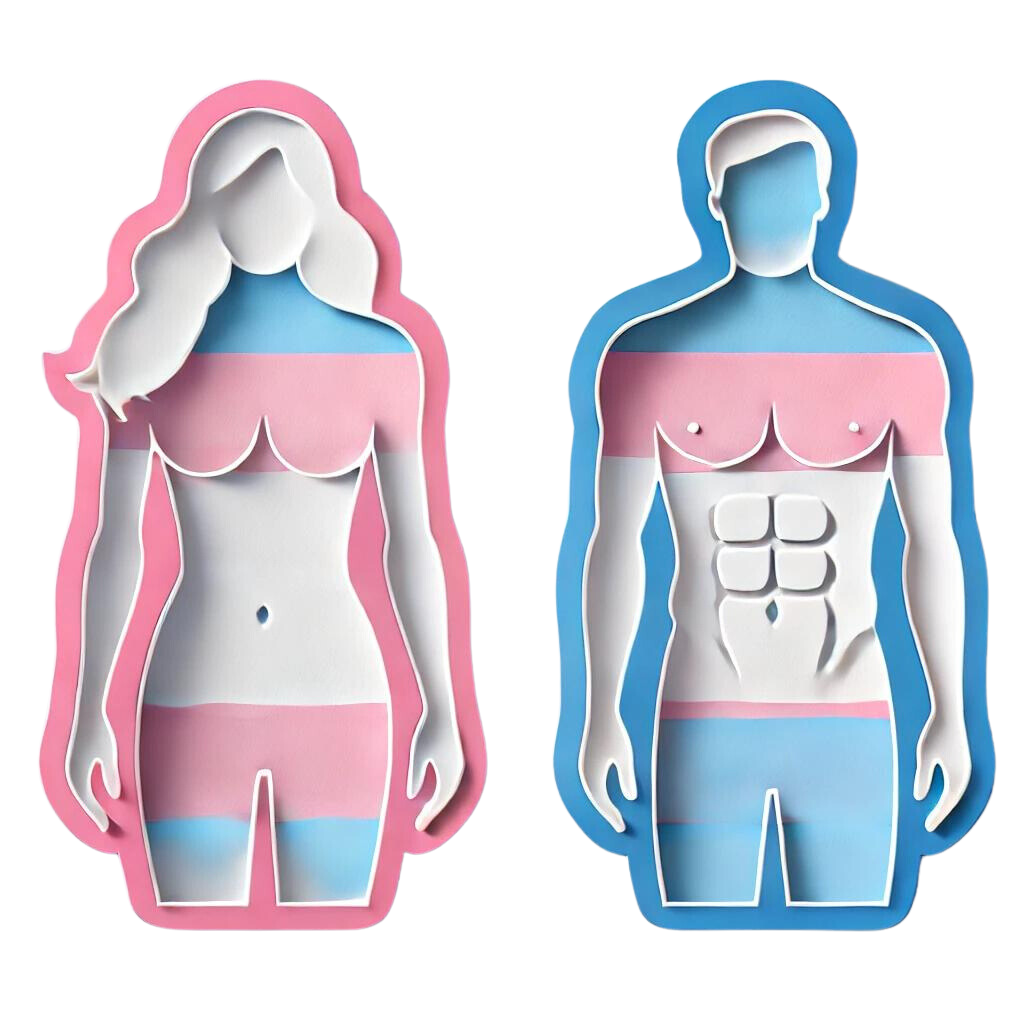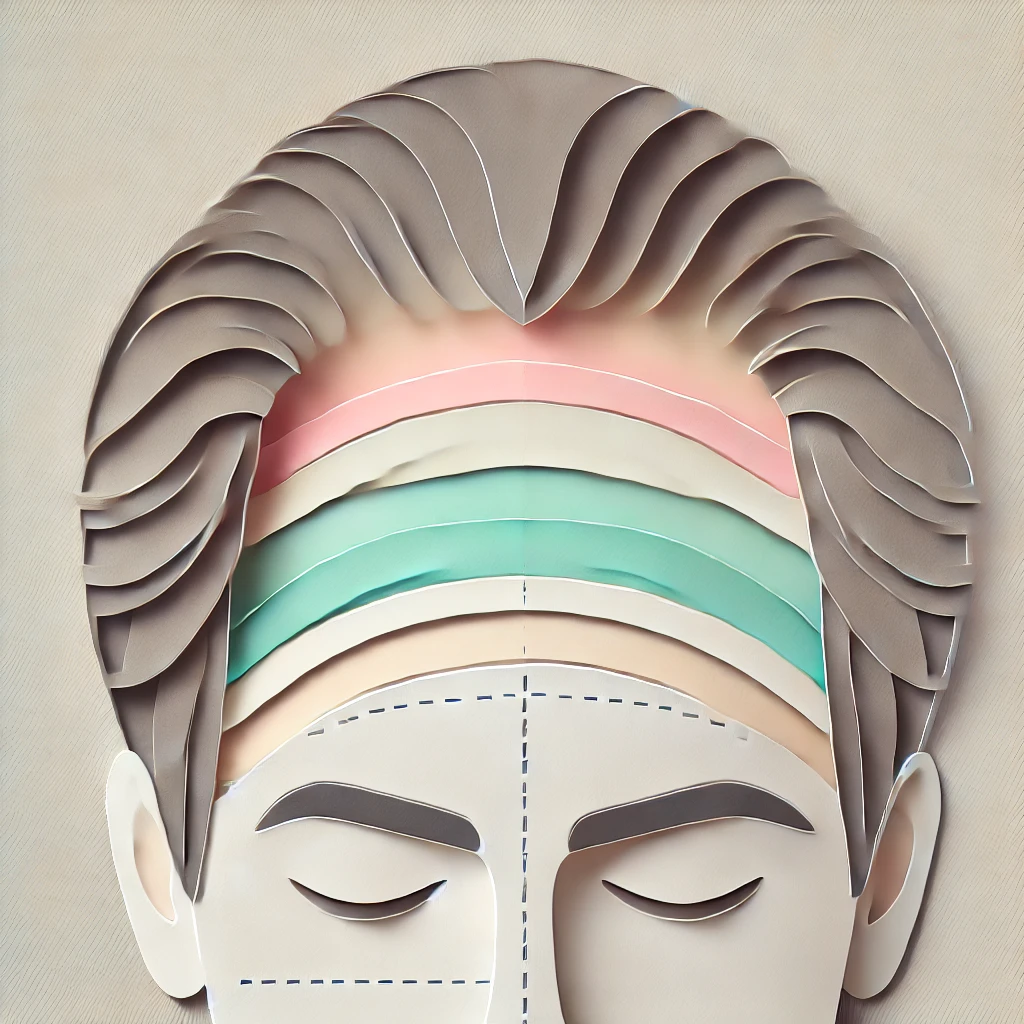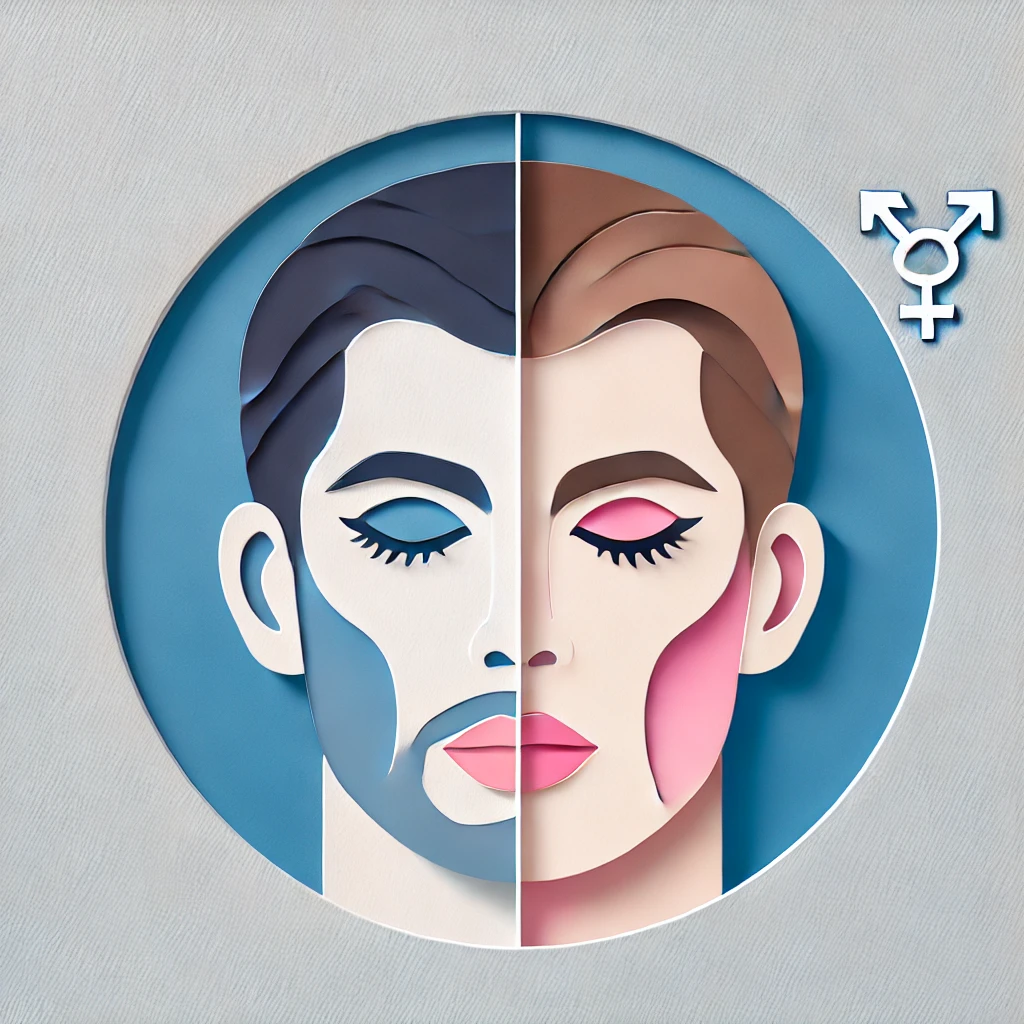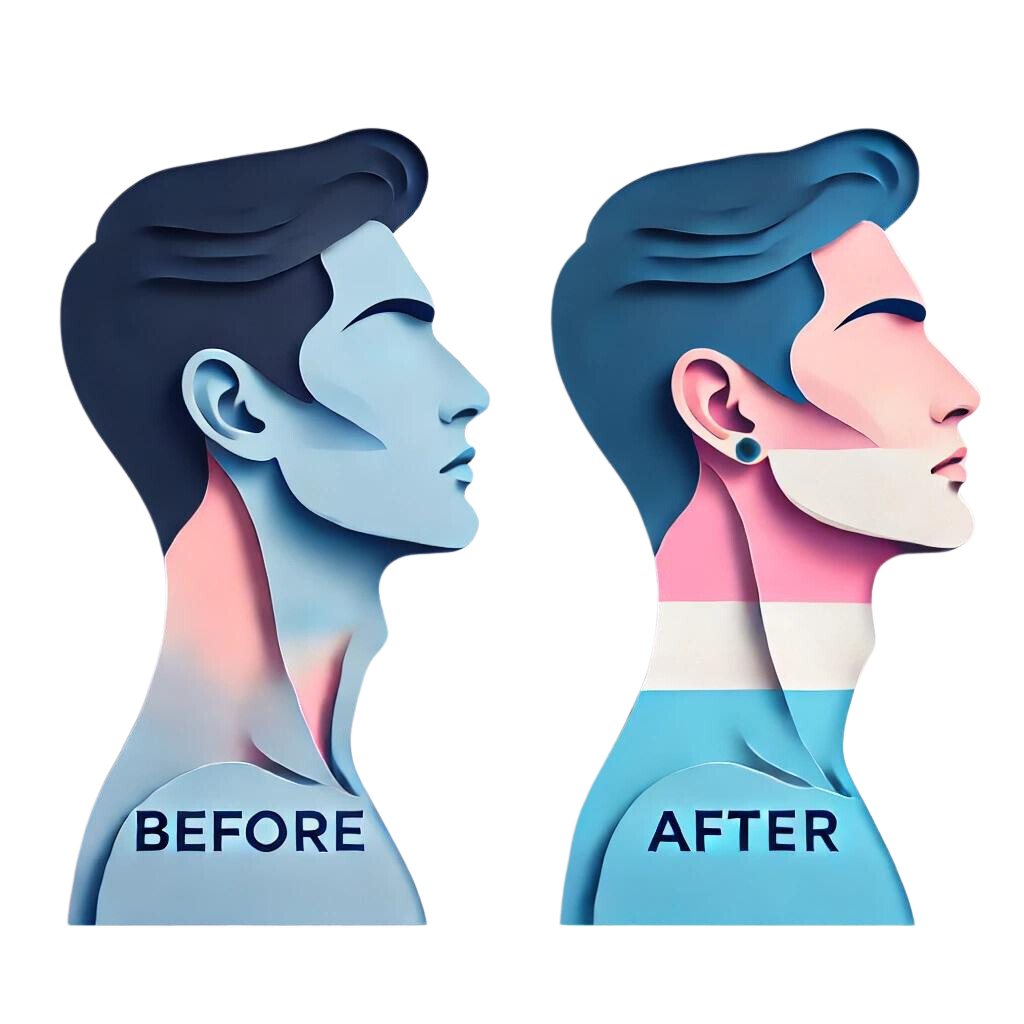Gender affirmation surgery, often referred to as gender-affirming surgery or sex reassignment surgery, is performed on transgender men and women who want their outward appearance to better reflect the gender with which they identify. This subspecialty of plastic surgery can be truly life-changing for those who do not feel their physical characteristics match their inner self.
Our team at Pure Aesthetics is proud to help these patients transform into their true gender identities. We offer a collection of female to male (FTM) and male to female (MTF) procedures, which you can learn more about on our pages below:
What Are the Types of Gender Reassignment Surgery Sydney?
People seek gender affirming surgery so their body matches their true gender. The most common surgical procedures include female to male (FTM) top surgery, male to female (MTF) top surgery and facial feminisation.
Chest Masculinisation/Female to Male Top Surgery
Transgender men are born into a woman’s body and may have FTM surgery to have a flatter and more contoured masculine chest.
There are different FTM surgical techniques. What technique your surgeon uses in your gender reassignment surgery depends on your goals and the size of your existing breasts, the soft tissue surrounding them and your skin elasticity. Dr Steve Merten will discuss the options with you during your consultation.
If you have larger breasts, the most common procedure is a full scar bilateral mastectomy with nipple grafts. This is where the surgeon makes a long incision below the breast to remove the mammary tissue and repositions the nipples and areolas. Excess breast tissue, skin and fat is removed, so the end result is a smooth, natural looking masculine chest. Many transgender men prefer an areola that is smaller so the surgeon can reduce its size before repositioning it.
If you have smaller breasts with minimal excess skin, you may have a subcutaneous mastectomy. During this procedure, your surgeon does not remove the areola or nipple and makes an incision along the bottom of the areola to lift the skin up to remove the breast tissue. But if you need the skin tightened and/or the size of the areola reduced, then the surgeon makes an incision all around the areola. This is called peri-areolar top surgery.
FTM top surgery is not just about removing your breast tissue. Your specialist plastic surgeon will carefully reconstruct your chest to give you the desired result.

Benefits of Female to Male Top Surgery
Benefits of FTM top surgy include significant relief from the symptoms of gender dysphoria. This causes transgender people a lot of distress because of the difference between their biological gender and the gender they identify with.
Male to Female Top Surgery
Male to female transgender surgery is for transgender females transitioning from male to female. MTF top surgery is also called a breast augmentation mammoplasty or breast augmentation where implants are used to make your chest more feminine.
While transwoman breast augmentation is similar to female breast augmentation in the decision-making process and the techniques, there are some significant differences. The size and shape of your chest must be considered to get your desired outcome. You may need fuller implants if you are tall and broad-chested or implants with a fuller projection if you do not have much breast tissue. Dr Merten will talk through your options at your consultation and help you make the best decision.
Benefits of Male to Female Top Surgery
Gender reassignment surgery male to female can improve the emotional wellbeing of transwomen as the gender change surgery helps them to achieve a more feminine appearance that aligns with their gender identity. It creates symmetry and a more balanced female silhouette which can reduce gender dysphoria.

Side Effects, Risks and Complications of All Top Surgery
Some of the side effects, risks and complications you may experience after top surgery include:
- Infection. While infection is rare, it is a possibility. If an infection does occur, the wound site may need draining and you may need to take antibiotics.
- Scarring. Scars may appear in horizontal lines across your chest after FTM gender change surgery. If you had MTF top surgery, the scars will be under your breasts. And it can take up to 18 months for the scars to fade. Some people decide to have more surgery to minimise their scarring. It is also important that you do not expose the area to the sun because this can make the scars darker and more obvious.
- Unsuccessful nipple graft. Do not worry about some skin shedding in the nipple area after a nipple graft. It is when the tissue dies that it is cause for concern. This can indicate the nipple graft was not successful and you may need further surgery or a tattoo to improve the areolar and nipple appearance.,
- Seroma. A seroma is when fluid collects under the skin. Where these are small, they should resolve themselves. You can minimise seromas after top surgery with drains and by wearing the compression vest according to your surgeon’s instructions. Seromas are common, and usually easily managed by sucking them out with a needle in our office.
- Haematoma. A haematoma is when blood clots form in the tissues after top surgery. The symptoms include discolouration, pain and swelling. If this is large, surgery may be required to remove the blood from under the skin. Smaller haematomas are usually able to be sucked out with a needle in the doctor’s office. Haematomas may increase the risk of infection so let your doctor know if you have any concerns.
- Reduced sensitivity in the nipples. Where there has been disruption to the nerve to the nipple, tingling and numbness can occur. When you have a bilateral mastectomy with nipple grafts in FTM top surgery, the surgeon removes the nipple completely and repositions it. This means they cut the nerve. In this case sensitivity may improve given time, but you will never have the same sensation as before surgery.
Facial Feminisation Surgery
Facial feminisation surgery is sex change surgery designed to give your face a more feminine appearance. It is a series of surgical procedures completed as part of a plan for gender affirmation.
The procedure can include a:
- Brow lift
- Forehead contouring
- Hair advancement
- Genioplasty
- Rhinoplasty
- Tracheal shave.

Brow Lift
Brow lift surgery will elevate the position of your eyebrows to give you a more feminine appearance. This surgery is usually done as part of forehead and hairline contouring using the same incision.

Forehead Contouring
The forehead is one of the most prominent gender markers which makes forehead contouring one of the core procedures of facial feminisation.
There are three important differences between the forehead of men and women:
Brow bossing. Women do not have brow bossing or only a little. Brow bossing is the prominence of a ridge of bone in the lower forehead just above the eye sockets.
Flat spot. Men usually have a flat spot between the ridges of their eye sockets Women do not have the ridges so they do not have a flat spot.
Slope of the forehead. Men’s foreheads tend to be steeper with a sharper angle between the nose and the forehead compared to women. A female’s forehead is rounder and tends to be vertical and the angle between the forehead and nose is wider.

Hair Advancement
The hairline is another distinct difference between men and women. Men have hairlines that are the opposite to women. Men have a higher hairline and lower eyebrows so by moving the hairline to a more feminine position it can transform the perception of your face.
This gender affirming surgery is often completed along with forehead contouring and eyebrow surgery to give a transwoman’s entire upper face a feminine appearance.

Genioplasty
The jaw and chin are often areas that transgender women want as part of sex reassignment surgery. A man’s lower jaw is square and not as pointed as a women’s jaw. Also a male’s chin is wider compared to a woman’s chin which is less pronounced, more oval and softer.
Transwomen often feel a jaw and chin reduction, or genioplasty, is an important part of facial feminisation.
A genioplasty reduces the size and shape of the jaw so it is narrower and rounder at the back of the jaw bone. This is combined with chin contouring to create a balance between them.

Rhinoplasty
Your nose is a prominent feature of your face and many transwomen believe that a rhinoplasty, or nasal refinement, gives them a feminine appearance. It also can make the eyes look bigger and emphasise the cheekbones.
Men usually have a larger and more broad nasal bone than women. And often there is a bump on a man’s nose. A woman’s nose is smaller and more refined and tends to be straight and narrow with a gentle curve. The angle between the nose and forehead is sharper in a man and the angle between the nose and lip is bigger. Also women’s nostrils are smaller.
A specialist plastic surgeon uses standard techniques to reshape and make the nose smaller so the result is gives a feminine outline that is in proportion.

Tracheal Shave
When you compare a woman and a man’s neck, there is a clear bump in the neck called an Adam’s apple. This is because during their teenage years, boys have increased testosterone which causes the cartilage of a man’s voice box to grow. Also the muscles become thicker and this is what causes a man’s voice to change.
A tracheal shave, or a chondrolaryngoplasty, removes the Adam’s apple of a transwoman. Having an Adam’s apple is a constant embarrassment so it is a common procedure performed during facial feminisation surgery. It is possible to perform this surgery in conjunction with other procedures or as a stand-alone procedure.

Risks and Complications of Facial Feminisation Surgery
Complications that some people may experience include:
- Scarring
- Damaged vocal cords with too much cartilage removed
- An Adam’s apple that is still prominent.
You may experience side effects of the surgery but they should resolve themselves in the first seven days:
- Muscle spasms in the vocal cords
- Bruising or swelling in the area
- Vocal changes or hoarseness
- Pain or difficulty when swallowing.
Recovering from Gender Affirmation Surgery
Gender reassignment surgery is generally safe but if you develop a fever, severe pain or there are other signs of an infection, call your doctor straight away.
Depending on the procedures or combination of procedures you have and your original general health, how you recover will vary. For example:
- Bruising and swelling. There will be bruising and swelling in the wound areas. Your may also have black eyes for four to six weeks after facial feminisation surgery.
- Pain and discomfort. It is also common to experience pain and discomfort for up to five days after surgery, but then it should start to ease. You will gradually be able to return to normal daily activities after sex reassignment surgery procedures. Your specialist plastic surgeon will provide post operative instructions which will include when you can start exercising and return to work.
- Bandages and dressings. Do not remove any bandages, drains, splints or compression dressings. Your surgeon will remove these to examine how you are healing at your first follow-up appointment.
- Showering. You can shower after surgery, unless your surgeon specifically instructs you otherwise. Avoid using scented soap and do not allow the water to spray directly on the surgical areas.

When looking for gender reassignment surgery Sydney, contact us at Pure Aesthetics to make an appointment for an initial consultation to discuss what you want to achieve with one of our experienced specialist plastic surgeons.
What is Gender Affirmation Surgery?
Gender affirmation surgery, also known as gender reassignment surgery, refers to the surgical procedures to help people to transition to the gender they identify with.
Understanding Common Terminology in Gender Reassignment Surgery
When researching gender reassignment surgery, people often encounter a wide variety of terms—some medically accurate, others outdated or informal. It’s not unusual to search for phrases like sex transplant surgery, gender change surgery female to male, or gender transformation operation. At Pure Aesthetics, we’re here to help make sense of this language so you can be comfortable and informed in your next steps.
Is “Sex Transplant Surgery” a Real Procedure?
While sex transplant surgery is not a medically recognised term, it is often used online to refer to genital surgery or broader aspects of gender affirmation. Our team uses respectful and contemporary terminology, and we are always happy to explain available procedures in a private consultation.
Common Search Phrases and What They Mean
Here’s a breakdown of some frequently searched phrases and how they relate to the care we offer:
- Gender change surgery: A general term that can refer to multiple gender-affirming procedures, including facial surgery, chest surgery, and genital surgery.
- Gender change surgery female to male: This typically refers to FTM top surgery (chest masculinisation) and may also be associated with other masculinising procedures.
- Gender transformation operation: Often used to describe a full surgical transition, though it can mean different things depending on the person’s goals.
- Gender corrective surgery and gender alteration surgery: Non-clinical phrases that refer to aligning physical appearance with gender identity.
Searching for the Right Surgeon
Individuals looking for experienced, gender-affirming professionals often search using terms like:
- Transgender surgeons
- Gender reassignment surgeons
- SRS surgeons
- Gender affirmation surgeons
At Pure Aesthetics, consultations are conducted in a private, respectful setting with a focus on open communication and informed decision-making about gender reassignment surgery.










